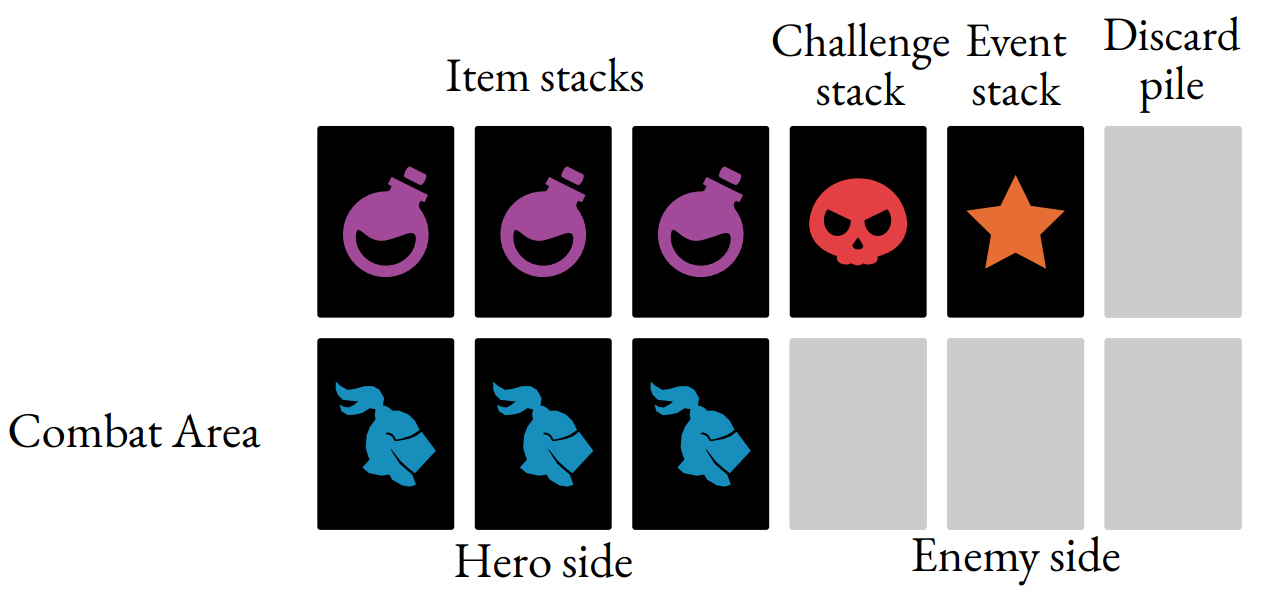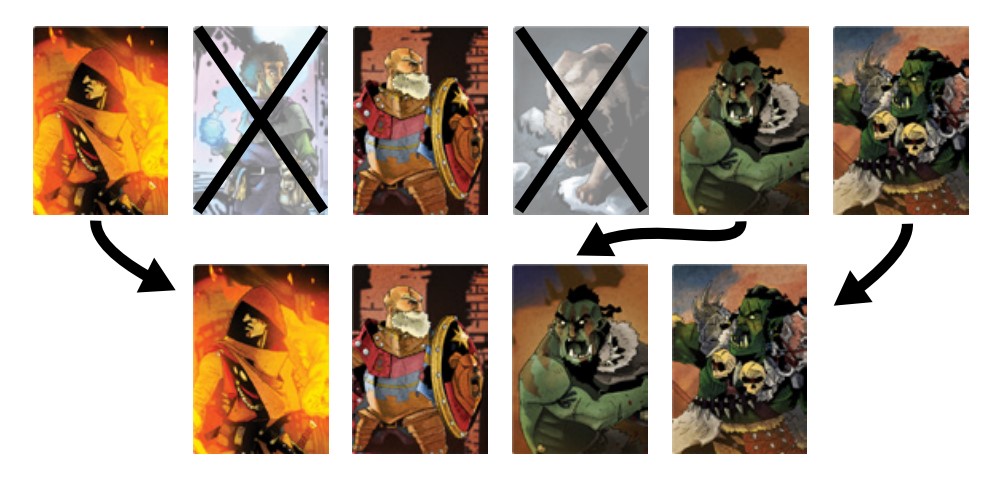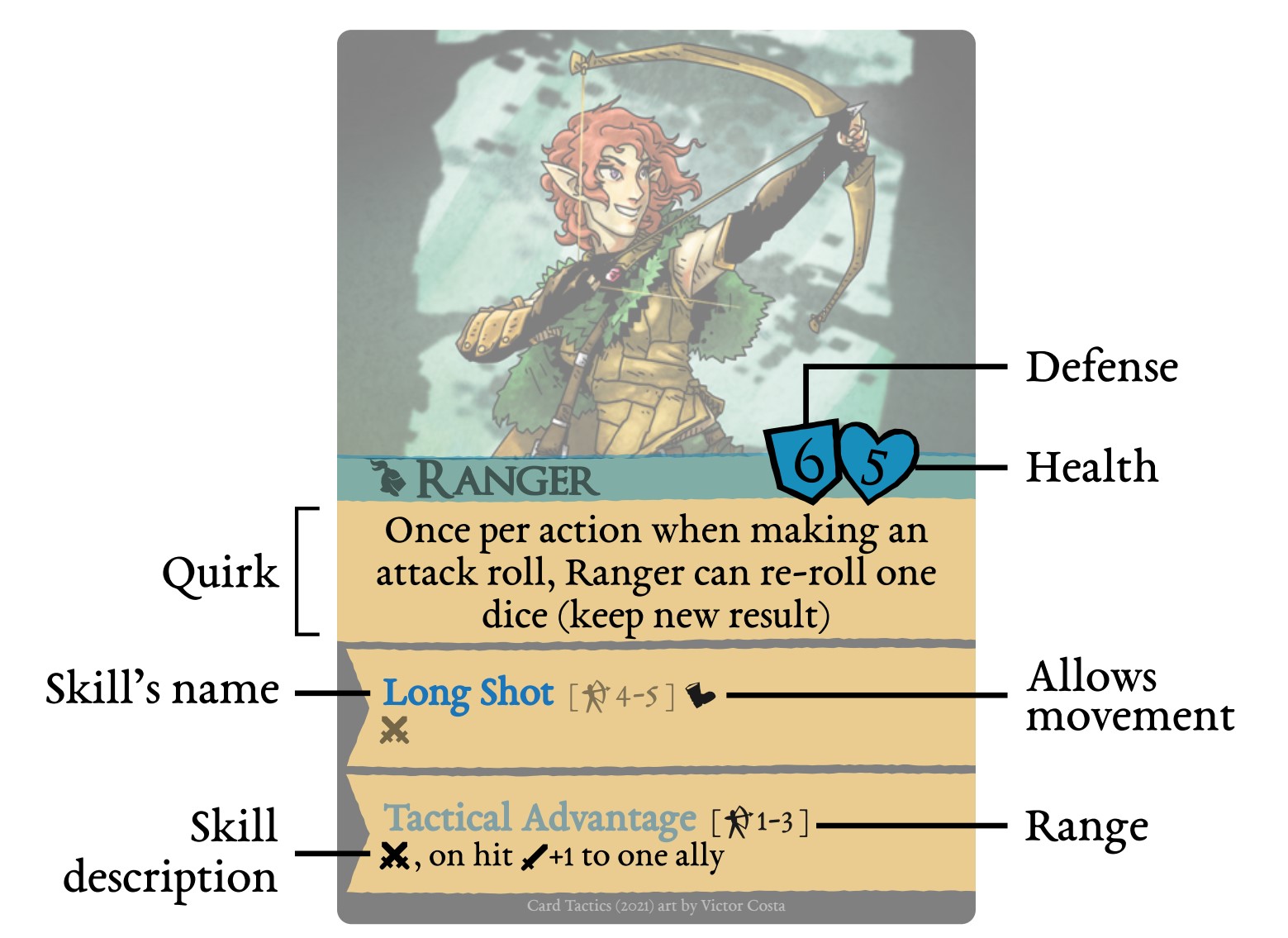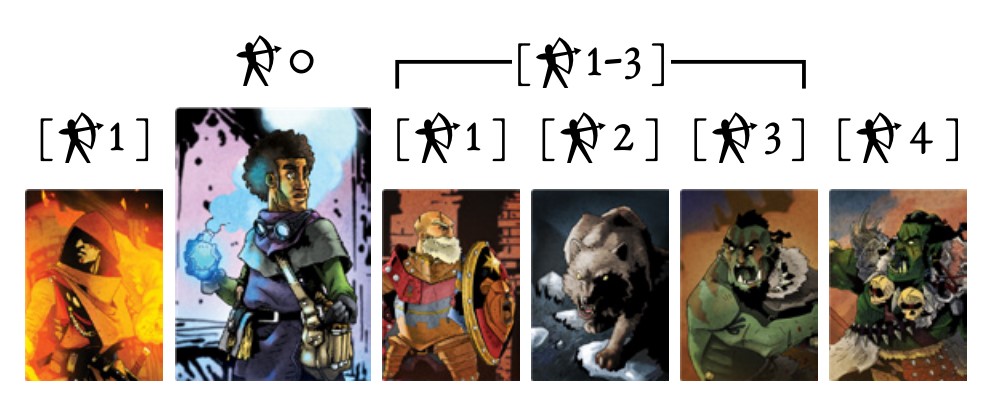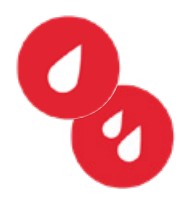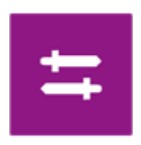Card Tactics is (supposed to be) a challenging game. Not only your team of heroes and items will enable different strategies, but events will also “mess up” with the course of the adventure. Learning the enemy’s skills and patterns is the key to success- and that takes some time. Experience, strategy and the ability to anticipate the enemy’s actions will exponentially raise the chances of victory.
Objective: Win five increasingly-difficult combats using chosen heroes. Items and events will add options and unexpected challenges. The game ends if at any point all heroes reach zero health.
Components: 66 playing cards, 56 tokens and 2 dice.
Frequently Asked Questions
Can I use a skill when its range ( ŵ ) doesn’t reach any (viable/desirable) target? What about using the movement ( ŷ ) option without using the skill’s description (attacking, etc)?
No. Moving must occur either before or after following the skill’s description (for example, you can attack and move, or move and attack- or in the Dagger’s case, move, attack and then move again). The only exception is if the skill’s description tells you to Pull or Push self and, being Restrained that can’t be done- which will end the skill’s effect (description) prematurely, ending that unit’s action.
When should the Counter effect be applied and how does it interact with other tokens?
The Counter is a tricky but powerful effect. An example: Ranger (has the Counter token) is attacked by Orc. The Orc rolls a total of 10 on its attack and applies any extra effects (Bleed, Restrain etc). Two possible outcomes: A) If Ranger survives the attack (and is not Stunned) will take Orc's attack result (10) and use against it (Orc - with a chance for a Critical Hit but no special effects) and discard the Counter token or; B) If Ranger didn't survive the attack it will be defeated and discard the Counter token alongside any other tokens it had (defeated units cannot Counter).
What happens when the Ranger attacks a Pixie? Both their quirks ask for/enable re-rolls.
There's three possible ways of going about it, and it's up to you to decide which one to use (your choice will make the game slightly harder or easier for that encounter): 1) they negate one another; 2) Ranger (can) re-roll first, then Pixie or; 3) Pixie re-rolls then Ranger has the option of rerolling.
Credits
Card Tactics (2021) by Gui de Souza Rocha + Illustrations by Victor Costa Box art by Guilherme “Frodo” + Text review by João Ricardo Rodrigues Icons and manual design by Aline de Souza Rocha + Thanks to all the awesome folks that helped make this project come true by playtesting, giving feedback and/or overall support (it’s been a long road since 2016) Special thanks to Sacha Zaporski, Neimar May, Everton Elvio Koser, Gustavo “Scary”, Massami “Sky”, Daniel Romao and the SaskGameDev community
